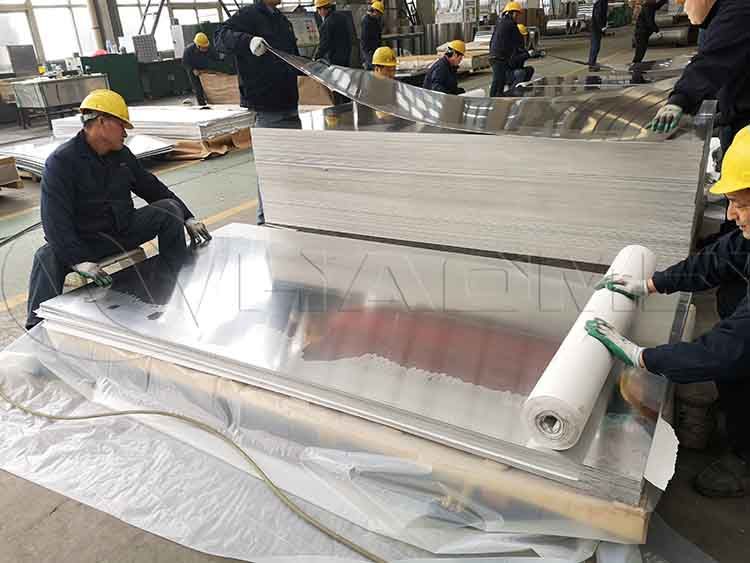The Alloying Elements’ Effect on The 6063 Aluminum Properties
6063 aluminium sheet is an aluminum magnesium silicon (Al-Mg-Si) alloy. Generally, it exists in the form of plates and is widely used in the automotive industry such as car floor plates. 6063 aluminum has excellent corrosion resistance. If it is surface treated, its anti-oxidation ability can be maximized. It can be used in harsh outdoor environments for more than 25 years.
Its magnesium content is between 0.45-0.9% and the silicon content is between 0.2-0.6%. Although the alloy content is very small, it greatly changes the properties of aluminum. Silicon increases the hardness of aluminum alloys, and magnesium increases the corrosion resistance of aluminum alloys.

Sometimes, in order to improve 6063 aluminum properties, ome rare earth elements such as Ce, Sc, Y and other elements are added. If the types and contents of alloy elements cannot be reasonably controlled during production, it will have a negative impact on the performance of the product.
Si element
When the excess of Si element is less than 0.06%, the excess Si not only helps to improve the tensile strength of the alloy but also has basically no effect on its corrosion resistance; when the excess of Si exceeds the critical value of 0.06%, it tends to segregate at the grain boundaries, leading to increased intergranular corrosion.
In addition, when the ratio of impurity iron elements and excess silicon elements in the 6063 aluminum alloy is appropriate, AlFeSi will also be formed together with aluminum. The electrode potential of this compound is higher than that of the aluminum matrix, and the two will form an electrode galvanic couple, thereby accelerating the corrosion of the matrix structure, which greatly reduces the stability of the alloy.
Mg element
The strengthening effect of Mg2Si is not only related to its solubility in aluminum but also to the magnesium content. As the Mg content increases, more Mg atoms are dissolved into the matrix during the solid solution process. During the subsequent heat treatment, the amount of Mg2Si precipitated in the structure also increases, thereby improving the mechanical properties of the alloy.
However, due to the influence of the solid solubility of Mg and Si atoms in the matrix, as well as the influence of temperature effect on the solubility of Mg2Si, when the Mg element content reaches a certain value, the primary coarse Mg2Si in the alloy cannot be dissolved into the matrix, resulting in a decrease in the strength of the material. On the other hand, the precipitated Mg2Si is easily coarsened at the grain boundaries. This coarse structure will cause black spots to appear on aluminum products during the anodization process, seriously affecting the corrosion resistance of the 6063 aluminum plate. Therefore, it is not advisable to make excess Mg in actual production, and the mass ratio of magnesium to silicon should be below 1.73.
Original Source:https://www.marinealu.com/a/the-alloying-elements-effect-on-the-6063-aluminum-properties.html
Tags: 6063 aluminum plate ,
Prev:DNV Certification Aluminum Sheet for Marine Applications